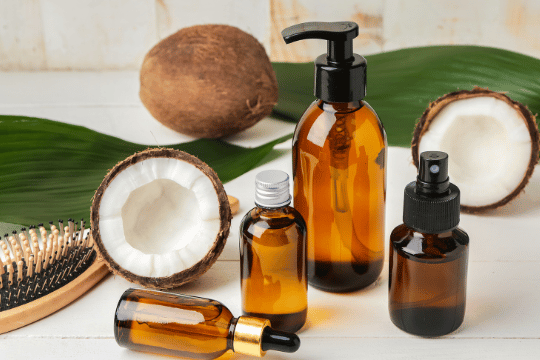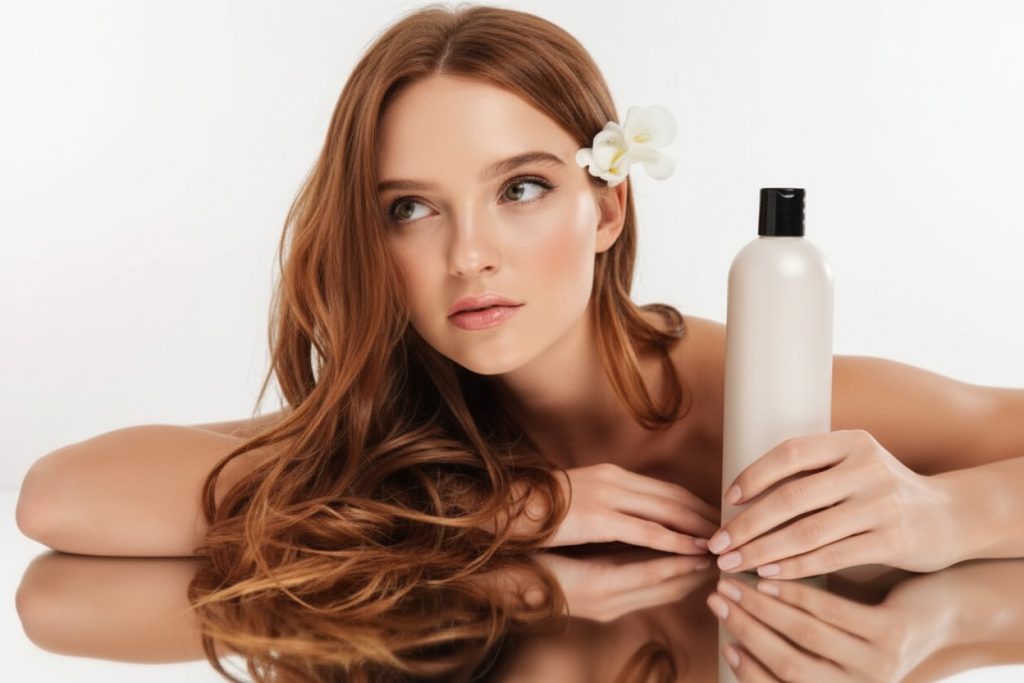The haircare market in 2025 is undergoing a profound transformation in response to an increasingly informed, demanding consumer focused on concrete results. Promises are no longer enough: consumers seek products with proven efficacy, visible benefits, and formulations backed by scientific evidence. This new reality compels brands, distributors, and laboratories to rethink their strategies from the very origin of each product.
Haircare has evolved from a sensorial or aesthetic experience to a functional—and in many cases therapeutic—necessity. Problems such as hair loss, scalp irritation, or extreme damage are no longer addressed with generic solutions, but with specific products that incorporate functional active ingredients, clinical validations, and advanced delivery technologies.
In this context, brands wishing to stand out in the competitive world of haircare need to offer something more: added value. This concept goes far beyond a collection of trendy ingredients; it requires a holistic approach that addresses:
- The precise identification of a specific hair need
- The design of formulations with scientific evidence and synergy between actives
- The development of products aligned with international regulations
- Transparent, honest communication focused on real results
Thus, the OEM/ODM laboratory specialising in haircare products positions itself as a key strategic ally for both emerging and established brands. Its role goes far beyond manufacturing: it supports the entire process from conceptualisation to industrial scale-up, ensuring that each product meets the standards of efficacy, safety, and differentiation demanded by today’s market.
In this article, we will delve into the most promising functional categories, the active ingredients with the strongest validation, and how to structure a comprehensive haircare line that offers real value to your brand and, above all, to your consumers.
1- Rising Categories Within the Haircare Market

The following categories represent both consumer trends and commercial niche opportunities for brands seeking to position themselves with innovative haircare propositions. A deep understanding of each allows for the development of highly segmented products with clear value propositions and distinctive claims.
Anti-Hair Loss
Treating hair loss remains one of the main concerns for consumers in the global market. It is estimated that over 60% of people will experience some degree of hair loss throughout their lives, whether due to hormonal, genetic, environmental factors, or lifestyle.
This category demands formulations with clinically demonstrated efficacy, capable not only of slowing hair loss but also of stimulating growth and strengthening the hair fibre from the root.
Key products:
- Night-time leave-on lotions
- Biphasic activating serums
- Fortifying shampoos with sustained-release systems
Business opportunity: Differentiate with visible efficacy evidence at 30, 60, and 90 days, tied to specific claims such as:
- “Less shedding when brushing”
- “Fuller-looking hair”
- “Increased thickness per follicle”
Scalp Detox
In an environment increasingly exposed to environmental pollutants, build-up from cosmetic products, and scalp imbalances, scalp detox emerges as a functional necessity rather than a passing trend.
The concept of a “hair reset” involves deep cleansing that removes toxins, normalises pH, regulates sebum, and prepares the scalp to receive subsequent treatments.
Hero products:
- Scalp exfoliants with fruit enzymes
- Clarifying shampoos with activated charcoal or apple cider vinegar
- Detox masks with absorbent clays
Winning strategies:
- Sulphate-free and silicone-free formulations
- Two-step routines: pre-shampoo + detox shampoo + balancing tonic
- Positioning as a weekly treatment for at-home or professional salon use
Deep Hydration
Hair damaged by chemical processes (colouring, bleaching, straightening) or external factors (UV radiation, chlorine, heat styling) requires a strategy of progressive, deep repair.
Hair hydration is no longer just sensorial: it must be based on the real ability of actives to penetrate the hair fibre, restore the cuticle, and retain water in the inner layers.
Hero ingredients:
- Low molecular weight hyaluronic acid
- Biomimetic ceramides
- Cold-pressed vegetable oils (jojoba, argan, marula)
- Plant-derived squalane
Technical differentiators:
- Use of liposomal or nanotechnological delivery systems
- Validated claims such as “+85% hydration after 1 use” or “anti-frizz effect for 72 hours”
- Melting or mousse textures for better spreadability and absorption
2. Active Ingredients and Trends in Haircare
What Consumers Are Looking For
Today’s hair consumer has transformed how they choose products: they don’t just read the label, smell it, or try it; they demand to know what each ingredient does and how it addresses their specific concern. Brands that want to stand out must adapt to this new demand for transparency, efficacy, and science.
Some of the criteria most influencing hair product choices in 2025 are:
- Clinically proven efficacy
- Natural and sustainable origin of active ingredients
- Dermatological safety for sensitive scalps
- Compatibility with professional treatments (colouring, straightening, keratin)
- Suitable for all hair types, including curly, afro, or frequently heat-styled hair
This compels laboratories and OEM/ODM brands to go beyond marketing and work with ingredients supported by studies, patents, or in vitro/in vivo validations.
Key Ingredients by Functional Category
Anti-Hair Loss
This segment requires active ingredients with multi-level action: they must act on the root, the hair follicle, microcirculation, and the hair growth cycle (anagen, catagen, telogen).
- Biotin: essential for keratin synthesis. Helps strengthen hair structure and reduce fragility.
- Caffeine: stimulates scalp microcirculation, promoting growth.
- Biomimetic peptides: act on follicular cellular metabolism, prolonging the anagen phase.
- Saw palmetto extract: inhibits the conversion of testosterone into DHT, the hormone responsible for androgenetic alopecia.
- Plant stem cells (Malus domestica): protect follicular stem cells, prolonging hair vitality.
Key strategy: Develop synergies between these ingredients and deliver them appropriately for effective penetration.
Scalp Detox
Detox ingredients must be able to adsorb, neutralise, and eliminate toxins without damaging the scalp or hair fibre. They should also balance pH, reduce sebum, and prepare the environment for subsequent treatments.
- Activated charcoal: excellent capacity to absorb impurities, toxins, and product build-up.
- Clays (kaolin, bentonite, ghassoul): purify and remineralise the scalp.
- Gentle acids (lactic, glycolic, mandelic): promote cellular renewal without irritation.
- Botanical extracts such as witch hazel, rosemary, and nettle: astringent, soothing, and sebum-regulating.
Current trend: Favour enzymatic exfoliants or pre-shampoo formats that prepare the scalp for deep cleansing without damage.
Deep Hydration
Effective hair hydration goes beyond silicones or heavy oils. It involves using active ingredients that restore the lipid barrier, fill porous areas, and help retain water within the hair fibre.
- Hyaluronic acid (various molecular weights): deeply hydrates, fills fissures, and provides elasticity.
- Ceramides (type III, NP, EOP): restore the hair’s intracellular lipids, improving resistance.
- Panthenol (provitamin B5): hydrates and adds shine, reducing breakage.
- Vegetable oils such as jojoba, argan, marula, camellia, or fractionated coconut: rich in essential fatty acids.
- Hydrolysed proteins (wheat, rice, silk): strengthen the internal structure of the hair shaft.
Modern approach: Use sustained-release technologies, such as liposomes or encapsulation, enabling prolonged action even after rinsing.
3. Results-Oriented Formulation
Formulating value-added haircare products involves much more than a combination of functional ingredients. It requires a strategy grounded in scientific evidence, a deep understanding of hair behaviour, and a credible commercial narrative. In this section, we will examine how to structure a haircare line that delivers on its promises and gains relevance both at the physical point of sale and across digital channels.
Designing a Value-Added Haircare Line
A well-structured haircare line not only addresses a specific problem (hair loss, frizz, heat damage, etc.) but tackles it holistically through a system of products that work in synergy. Ideally, you develop modular routines that combine:
- Functional shampoos with gentle surfactants and targeted actives
- Treatment conditioners that hydrate without leaving heavy residue
- Masks with smart delivery systems
- Leave-in serums or tonics for continuous action
This approach helps consumers maintain a consistent routine, maximise benefits, and perceive tangible results.
Practical example: Anti-hair loss line
- Stimulating shampoo with caffeine and biotin
- Conditioner with peptides and ceramides
- Activating serum with saw palmetto and plant stem cells
- Oral supplement with B-group vitamins and zinc
Efficacy Assessment: Evidence to Support the Promise
To substantiate functional claims, it is essential to implement standardised testing protocols that are auditable, reproducible, and convertible into sales arguments.
Common tests include:
- Digital trichoscopy: assesses hair density, thickness per follicle, and growth phase
- Corneometry: measures the level of hydration in the hair fibre
- Peel tests: determine breakage resistance under controlled conditions
- Combability test: analyses friction reduction after product application
For detox or scalp products, sebum, pH, and microflora measurements are used via in vivo assays.
Claims derived from results:
- “35% reduction in hair loss in 60 days”
- “+90% hydration after a single application”
- “Scalp purification from first use”
Transparency as a Brand Value
In the digital age, consumers research before purchasing. Therefore, being transparent in communicating ingredients, concentrations, origin, and efficacy validation is not optional—it is a key differentiating value.
Recommended practices for brands working with OEM/ODM laboratories:
- Include the functionality of main ingredients on packaging
- Incorporate QR codes linking to clinical results, usage instructions, and suggested routines
- Offer samples or discovery kits to encourage trial
This not only strengthens consumer trust but also improves e-commerce conversion rates and builds a positive reputation in the medium term.
Inclusive and Global Formulation
A key aspect of modern formulation is its adaptability to different hair types and markets. A product that works on straight hair will not necessarily be effective on curly, Afro, or heat-damaged hair.
OEM/ODM laboratories must develop adaptable base matrices for:
- Diverse ethnicities and hair texture types
- Climatic conditions (humidity, dryness, solar radiation)
- Local regulations (allergens, preservatives, labelling)
This enables brands to scale products to new markets with minimal regulatory or formulation adjustments, whilst maintaining consistency in brand promise.
Sensorial Integration and User Experience
Objective efficacy is fundamental, but it should not overshadow the subjective user experience. The sensorial qualities of a haircare product can be the decisive factor in repurchase.
This includes:
- Distinctive fragrances that evoke wellbeing, freshness, or naturalness without overwhelming the hair
- Textures suited to product type and moment of use: light gels for serums, rich creams for masks, fast-absorbing fluids for tonics
- Ease of rinsing and immediate combability, especially in conditioners and leave-in treatments
User trials with real consumers also allow fine-tuning of sensorial aspects and generate valuable insights that enrich commercial development.
Consistency Between Formulation and Brand Narrative
A common mistake among emerging brands is developing powerful storytelling that is not aligned with the product’s actual formulation.
For added value to be perceived and credible, it is essential that:
- The active ingredients mentioned are present in effective concentrations
- The communicated benefits are supported by studies, trials, or scientific publications
- The brand and product story integrates with technical language without losing approachability
Example: If a brand bases its identity on “Mediterranean phytotherapy”, it must include botanical extracts representative of that region, with proven properties and a sustainable approach to raw material sourcing.
Modular Approach and Commercial Scalability
A good haircare formulation must be easily adaptable to different versions or line extensions. This allows:
- Creating variants by hair type (dry, oily, combination, curly, damaged)
- Offering complementary products such as sprays, boosters, or single-dose ampoules
- Launching limited editions or collaborations without redoing the entire R&D process
OEM/ODM laboratories with experience in commercial strategy provide modular solutions that optimise initial formulation investment and maximise long-term profitability.

4. Choosing a Haircare Manufacturer with Technical and Regulatory Expertise
The Value of a Laboratory with Real Haircare Experience
Choosing a specialised OEM/ODM haircare laboratory is one of the most decisive decisions for the success of a haircare brand. It’s not just about finding a manufacturer, but about adding a strategic partner capable of transforming an idea into a commercially viable, legally regulated, and technically validated product.
A good laboratory offers a combination of:
- Scientific know-how to formulate based on evidence
- Technical capacity to produce at different scales (laboratory, pilot, industrial)
- Commercial expertise to adapt formulations to different markets and distribution channels
What Does an Expert OEM/ODM Haircare Partner Bring?
In-Depth Knowledge of Hair Formulation
Laboratories with a proven track record in hair products have a deep understanding of the specificities of hair and scalp, including:
- The structural differences between hair types (straight, curly, afro, chemically treated)
- The interaction of ingredients with the hair fibre and their effective delivery
- Emerging trends and current consumer demands (skinification, scalp care, anti-hair loss claims, sustainability)
Ability to Develop Functional and Differentiating Products
Not all laboratories can translate a trend into a product with commercial impact. A laboratory specialised in haircare offers:
- Proprietary libraries of tested functional actives
- Customised formulation proposals for each cosmetic objective
- Creation of complete systems (routines, kits, sets) with sensory and functional coherence
Comprehensive Brand Development Support
The best OEM/ODM partners don’t just formulate: they collaborate on the overall project strategy, from idea to launch. This includes:
- Advice on naming, storytelling, and line architecture
- Development of differentiating concepts and competitive claims
- Support with marketing strategy and positioning by channel (e-commerce, retail, professional)
Regulatory Expertise and International Certifications
One of the biggest risks for a brand is launching products that don’t comply with current regulations. A reliable laboratory must:
- Operate under Good Manufacturing Practices (GMP – ISO 22716)
- Have complete technical documentation (PIF, SDS, safety assessments)
- Manage health registrations in key markets such as:
- European Union (Regulation 1223/2009)
- Latin America (ANMAT in Argentina, COFEPRIS in Mexico, INVIMA in Colombia, DIGEMID in Peru)
- United States (FDA compliance and labelling requirements)
- European Union (Regulation 1223/2009)
Innovation and Industrial Scalability
A laboratory with its own R&D can integrate new ingredients, delivery systems, and formulation technologies, adjusting them according to the project’s needs. Additionally:
- It has pilot plants to validate batches prior to industrial production
- It scales batches without altering product stability or properties
- It allows the creation of limited lines or progressive launches for market testing
In a context where sustainability is also part of innovation, the right partner offers:
- Natural or certified organic formulation options
- Recyclable, refillable, or biodegradable packaging
- Production processes with lower water and carbon footprint
Real Commercial Drive: Much More Than Manufacturing
The true value of an OEM/ODM laboratory lies in acting as a business accelerator. This translates into:
- Faster development speed (prototypes in weeks, not months)
- Quick response to trends (formulations adapted to TikTok, influencers, seasonality)
- Flexibility to produce small batches without penalties
- Continuous innovation proposals to maintain competitiveness
Some laboratories even offer:
- Private label services with catalogues ready for customisation
- White label models for rapid market entry
- Branding consultancy for niche brands looking to scale
This co-creation approach allows brands to focus on strategy, marketing, and sales, delegating technical complexity to a specialised team.
Conclusion
The haircare sector in 2025 is ready for propositions that combine proven effectiveness, genuine differentiation, and tangible innovation. Consumers no longer respond to generic slogans or exaggerated promises: they seek formulations with measurable results, scientifically backed ingredients, and brands that communicate with honesty.
Developing a haircare product line with added value means approaching the process from a comprehensive, strategic, and technical perspective. It involves deeply understanding market needs, but also anticipating trends and offering effective solutions that connect emotionally and functionally with the customer.
This requires:
- Understanding the emerging functional categories, such as anti-hair loss, detox, deep hydration, and scalp care. Each segment represents a specific need, but also a commercial opportunity to differentiate if approached with rigour and coherence.
- Investing in active ingredients with clinical backing, evaluated under real conditions and delivered in a way that guarantees efficacy. Today’s consumer wants to know why an ingredient is present, what function it serves, and how it acts upon their hair.
- Designing results-oriented formulations, where each component has a precise function, from the main actives to the preservative system or the type of emulsifier used. Everything must serve the claim that the brand promises.
- Collaborating with an OEM/ODM laboratory that accompanies development from start to finish, not just as a manufacturer, but as a strategic partner. A good laboratory contributes regulatory knowledge, technical vision, innovation support, and a framework that ensures each product can scale robustly.
Ultimately, the brands that succeed in this scenario are those that build trust. And that trust is earned through transparency, quality, and real results.
At MS Cosmetics Lab, we develop innovative haircare lines with functional and validated actives. Our approach combines science, technology, and commercial strategy so that each product we develop alongside our clients has a clear differential in the market.
From ingredient selection to final formulation, through packaging design, efficacy testing, and regulatory compliance, we are your strategic partner to create products with genuine added value.
Get in touch and take your haircare brand to the next level with MS Cosmetics Lab!




